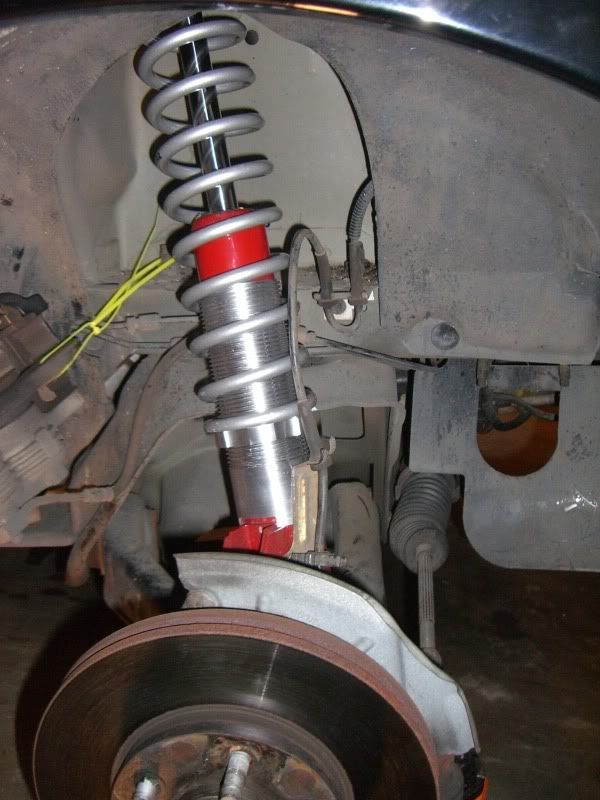Ford Mustang and Ford Mustang GT 1994-2004: Suspension Performance Diagnostic Guide
Does your suspension have some sort of mystery noise or vibration? Fixing the problem may not be as hard as you think.
This article applies to the Ford Mustang and Ford Mustang GT (1994-2004).
Even with a new set of tires, your car still feels like it wants to fly off the road. There are quite a number of reasons as to what can cause your suspension to fail. Luckily, most of the them can be inspected without even picking up a wrench. As with most systems on your car, each component must properly complete its job so the vehicle can maintain a smooth ride. If any one of these components fail, one or more suspension components will try to compensate, which will cause added wear to the vehicle as a whole and affect its drivability. Instead of throwing your money at a shop to diagnose the problem for you, why don't you try inspecting the problems listed here.

Materials Needed
- Flashlight
- Jack
- Jack stands
Step 1 – Check your sway bars' end links
They may have broken.
A sway bar is a piece of metal that connects to the left and right wheels, helping it control side-to-side body roll. The end links are exactly what they sound like; they are links at either end of the sway bar that attach it to the chassis. The ends of the end links are comprised of washers and bushings placed on top of each other. When the bushings fail, the sway bar will lose some of its strength, which will often cause the car to heavily vibrate.
- Jack the car up.
- Take a flashlight and inspect the sway bar.
- Check the bushings and grab the bar to make sure it's secure.

Step 2 – Check your struts
The shocks may have blown.
The shocks are the main components responsible for absorbing the vibrations of the road. They are paired with a coil that may either mount directly to it or beside it depending on its design. The coil helps support the chassis, while the strut helps allocate the vibrations.
- You can check the struts by keeping the vehicle on a flat ground.
- Pay attention to the normal ride height of the car, and take a photo of it.
- Push the rear of the car down, and view how it adjusts back to the standard height.
If it fails to re-adjust properly, or is excessively bouncy, the strut may be damaged, but you should lift the chassis up and visually inspect them to make sure. Damaged struts will generally have its fluid leaking from the top of its body or the piston rod.

Pro Tip
If your struts are the cause of the problem, you should look at installing some aftermarket components. Aftermarket struts and coils will help improve the overall performance of your Mustang.
Step 3 – Check your ball joints
They might be broken, or have worn bushings.
Ball joints are found on the front lower control arms of your Ford Mustang. They are responsible for providing stability to a wheel hub, without interfering with a cars steering. A ball joint's design is relatively simple, featuring one bearing that seats inside a socket, similar to a knee-joint. The bearing is then able to pivot up and down without worsening the structural integrity of the vehicle. A bad ball joint will often knock while you are turning or cause the steering wheel to violently vibrate.
- Raise the chassis up and support it.
- Look under the car and visually inspect the ball joint boot for any tears or leaks.
- Grab the wheel and shake it to check for any play.
If you can not move the ball joint by hand, try it with a pry bar. It should barely move, so if it has too much play, replace it.

Related Discussions
- Suspension Problem, Cant Stand it Anymore. - MustangForums.com
- Suspension Help - MustangForums.com
- Uneven Suspension Problem - MustangForums.com
- Front Suspension Problem - MustangForums.com
- Suspension Problems, Bottoming Out - MustangForums.com






